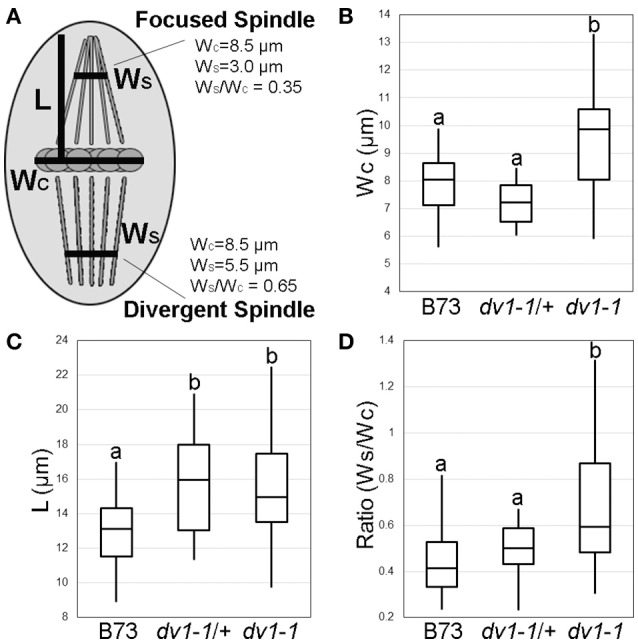Figure 2.

Quantification of the dv1-1 phenotype on spindle shape and pollen viability. Spindles were visualized using immunofluorescence as shown in Figure 1. Measurements were taken using the Slidebook 6 digital microscopy software package (Intelligent Imaging Innovations, Denver, CO). Lowercase letters in B, C, and D represent groups of significant difference as determined using ANOVA at α = 0.05. (A) Schematic of measurements taken, including width of the metaphase plate (WC), length of the half-spindle from metaphase plate to pole (L), and width of the spindle at 75% of length L (WS). The ratio of WS/WC can be used to quantify spindle shape as either focused (shown in the top half-spindle) or divergent (bottom half-spindle); (B) Width of the metaphase plate (μm) is significantly higher in plants homozygous for dv1-1 than either wild type or heterozygous plants; (C) Length of the half-spindle (μm) is significantly larger than wild type in both dv1-1 homozygotes and heterozygotes; (D) The ratio of spindle width at the metaphase plate to spindle width near the poles, a proxy for spindle shape and degree of pole focus, is significantly higher in dv1-1 plants while heterozygotes displayed an intermediate phenotype.
